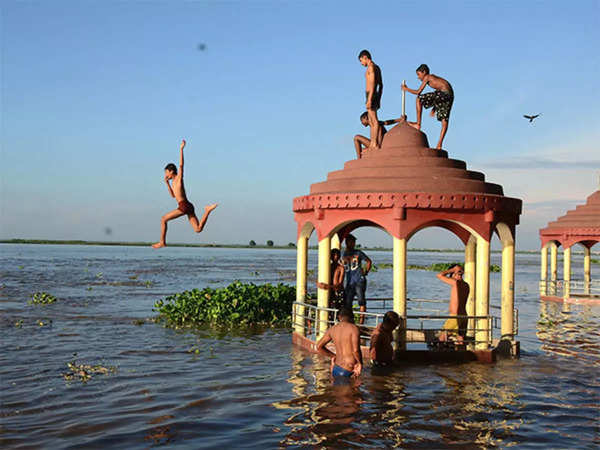Lucknow : Since its inception in 2014, the Namami Gange programme has achieved significant milestones in its mission to rejuvenate the Ganga. NMCG has stated that, upon completion of Phase II of the Namami Gange Mission, an additional 3,108 MLD of sewage treatment plant (STP) capacity will be achieved. This capacity in March 2014 was only 1,221 MLD, which has increased to 3,110 MLD after rehabilitation of existing STPs and development of new capacities.
Recent assessments by the Central Pollution Control Board (CPCB) across five Ganga main stem states show notable improvements in the river’s water quality. Dissolved Oxygen (DO) levels, a key indicator of river health, now meet primary bathing water quality standards, supporting the river’s ecosystem along most of its stretch. Biochemical Oxygen Demand (BOD) levels are also within acceptable limits, with minor exceedances in certain areas of Uttar Pradesh. From 2014 to 2023, multi-sectoral interventions have led to improved levels of DO, BOD, and Faecal Coliforms (FC).
Dr. Vinod Tare a professor at IIT Kanpur & founder of Centre for Ganga River Basin Management and Studies (cGanga) has stated that, “All the technologies adopted for sewage treatment under the Namami Gange programme are capable of treating faecal coliforms to the prescribed standards. This has resulted in significant improvements in the aquatic life within the Ganga basin. Enhanced water quality and sewerage infrastructure improvements by the National Mission for Clean Ganga have contributed to the restoration of biodiversity and ecosystem in the river, with notable increases in the populations of Gangetic dolphins, otters, and turtles.”
STP has played an important role in Ganga Conservation. NMCG has incorporated stringent parameters into STP designs to combat pollution. Targeted interventions have been implemented to address complex challenges, such as effluents from tannery and textile industries. Notably, a 20 MLD Common Effluent Treatment Plant (CETP) has been established in Kanpur, the largest of its kind for the tannery sector in India. Rigorous inspections of grossly polluting industries have resulted in improved compliance with environmental regulations.
The STP infrastructure is designed not only to meet current demands but also to anticipate future requirements over the next 15 to 30 years. STPs are engineered to operate below their full capacity to accommodate projected growth. In Varanasi, the STP capacity has increased significantly from 100 MLD in 2014 by 4.5 times, with an additional 55 MLD STP currently under construction. This approach ensures that India’s sewage treatment infrastructure is prepared for future population growth and environmental demands. Through dedicated efforts and successful initiatives, Namami Gange is rapidly becoming a successful global model for river rejuvenation. The program’s comprehensive approach, combining advanced sewage treatment technologies, stringent industrial regulations, and extensive infrastructure development, has demonstrated significant improvements in water quality and biodiversity.
With 465 projects approved at a cost of Rs. 38,696 crores, the Namami Gange programme initiative has made substantial progress in addressing longstanding environmental and infrastructure challenges. The programme’s steady pace over the past 10 years has shown tremendous results, spanning small rivers, tributaries, and the main stem of the Ganga.









